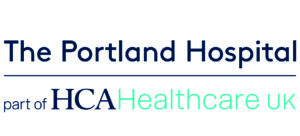What is the difference between PCA and NCA?
If your child has a PCA, he or she is given control of the handset and can therefore decide when the pain relief is given and how much. This means that your child has control over their pain and can have pain relief without asking a nurse.
It is important that your child is the only person to press the button. This is a safety mechanism to stop your child having too much pain medicine. If your child uses too much (although it is limited to a safe amount), he or she will fall asleep so will not be able to press the button again. In order to be deemed suitable to use a PCA, your child will need to be assessed by a nurse or an anaesthetist to ensure that he or she is:
If your child is not suitable for a PCA, we will set them up with a NCA. This is similar to the PCA but is adapted for younger children and those unable to press the button. The nurse will press the button after assessing your child’s pain and check to make sure he or she is not too sleepy. It is important that the nurse is the only person to press the button.
Some children start with a NCA and switch to a PCA when they are starting to wake up and recover from the surgery.
What medicines are used in PCA and NCA?
The pain relief medicine used most often is Morphine, which is a strong and effective analgesic. The amount of Morphine given to your child is carefully calculated according to their age and weight. Morphine is not addictive when given for pain relief. However, children who are on high doses of Morphine for more than a week may find that their bodies become used to its effect. When the Morphine is no longer required, this can easily be managed by gradually reducing the dose over a few days. This should not delay your child’s discharge from hospital or cause any long term problems. As well as Morphine from the PCA/NCA, your child will also receive regular Paracetamol and possibly a non-steroidal anti-inflammatory drug (NSAID), such as Ibuprofen or Diclofenac, if suitable for your child.
What are the benefits of using PCA/NCA?
The PCA/NCA dose can be given to your child based on their needs.
It can be given even if your child is not able to eat or drink.
With a PCA, older children may feel they have some control over their pain and be able to balance their pain relief with side effects.
Patients can titrate their analgesia to their level of pain.
It provides a rapid response to the demand for analgesia.
There are fewer complications when certain pain-relieving agents are administered via PCA/ NCA.
Side-effects of PCA/NCA
Sometimes the Morphine in the PCA/NCA can cause your child to become too sleepy and it may also slow their breathing rate. The nurses on the ward will monitor your child closely for these signs. All children having PCA/NCA are prescribed another medicine that can reverse this effect very quickly.
Morphine can sometimes make your child feel sick, itchy or constipated. Reducing the dose can be helpful or other medicines can be prescribed to stop these side effects.
While your child is using the PCA/NCA the nurses will carry out hourly assessments of his or her pain, level of sedation (sleepiness) and any side effects.
Any questions
If you have any questions about your child’s pain, please ask our nurses on the ward, your child’s Anaesthetist, Pharmacist, RMO or the PSP – Ext 10843/10969
Please also contact – Nasra Ahmed, Complex Surgical/Pain Lead Nurse: Tel Tel: 020 7580 4400 (ext 10838)
